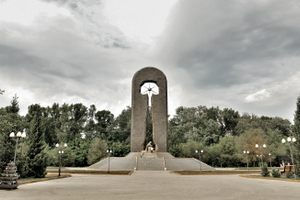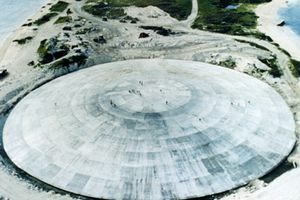About
Prior to 1990, Semipalatinsk (today known as Semey) was one of the numerous closed cities of the Soviet Union. Only high-ranking officials of the politburo knew about the going-ons within these cities. Nobody except those few with clearance were allowed to enter or leave these areas, and these closed cities did not even appear on maps or road signs.
When the Cold War ended, most of these closed cities were abolished, and the secrets they concealed became known to the public. While most of these places were only strategical military locations or sensitive mining areas, some of these places truly hid incredible secrets – like the formerly closed city of Semipalatinsk.
The Polygon was the primary nuclear test site of the Soviet Union. In total, 456 nuclear tests have been conducted between 1949 and 1989 at Semipalatinsk, including 340 underground and 116 atmospheric explosions. Altogether, the number of nuclear explosions at Semipalatinsk equals more than 2,500 Hiroshima bombs. A huge number of craters, partly filled with water, testify to these experiments. It was not the only nuclear test site of the Soviet Union, but it was the only one close to major settlements.
The Soviet Union conducted these nuclear tests without regard to the health effects on the 200,000 residents of the Semipalatinsk area, who weren't evacuated or warned during the actual explosions. Local residents soon became aware of what was going on, and witnessed health problems soon after the first tests. Cancer rates in the Polygon area skyrocketed and a couple of years following the first tests, a disturbingly high number of children with genetic defects were born. There was nothing the people could do about it, since they were not allowed to leave the boundary of the closed city area.
Finally, in 1989, an anti-nuclear movement called “Nevada Semipalatinsk“ was formed, that forced the weak and crumbling Soviet Union to refrain from further nuclear tests and to close the site. Following the independence of Kazakhstan, the closed city status was abolished.
The site may have been closed and the tests may have stopped, but the legacy of the nuclear tests lingers on. An area of more than 18,000 square kilometers is heavily contaminated and seemingly as many as 1.5 million people – a tenth of the total population of the country – have been diagnosed with health problems that can be attributed directly or indirectly to the nuclear tests.
Even today, people continue to live in the Polygon area. Since this is one of the poorer regions of Kazakhstan, few people have been able to move away. Those who stayed continue to rely on contaminated local crops and water, and even dismantle structures of the Polygon to obtain scrap metal they can sell. Cancer rates, including leukemia, are still as extraordinarily high as they were decades ago, as are infertility and depression. Still, one in twenty children are born with severe birth defects – and almost none of the other nineteen are born healthy.
The disturbing 2010 documentary film “After the Apocalypse“ describes the current situation of the site.
Related Tags
Know Before You Go
The place can be visited with a permit. Therefore you need to buy a tour of one or two days.
Central Asia Road Trip: Backroads & Bazaars
A 2-Week, 4-Country Odyssey.
Book NowPublished
May 15, 2012



























